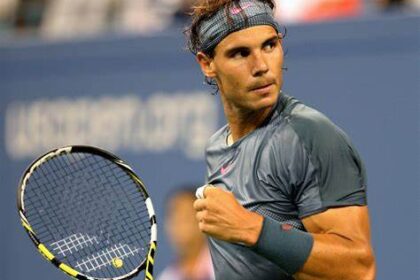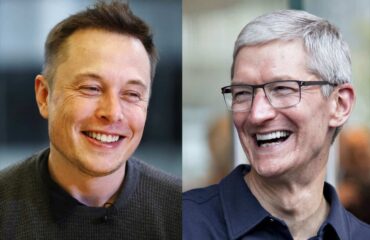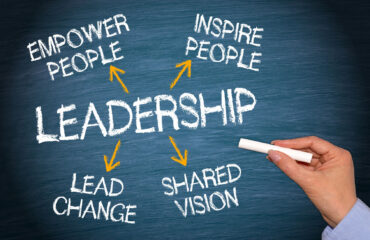
We use the term greatness very frequently in our day-to-day life.
We call some fine work done by someone as great work, we refer to companies that are doing well as great companies, we watch nice movies and see fantastic acting and respond as great actors, we watch live sports and get drawn to some fantastic achievements like what’s happening in the commonwealth games and exclaim what a great sportsman, we hear about achievements and facilitates and at times about earlier great empires and feel what a great nation.
While the word great is common in all these different situations what is really our benchmark for greatness?
Let’s understand what would be a right benchmark for each of these situations:
As a small kid I used to read about the tennis superstar Bjorn Borg and would be fascinated by his unbelievable run of winning 5 consecutive Wimbledon titles. I still remember listening to the radio commentary of the 1981 Wimbledon in a fantastic final where Bjorn Borg lost to McEnroe in a fantastic final which included an unbelievable tie break. After this loss Bjorn Borg then only 24 who had won 11 Grand Slam titles at a such a young age just faded away playing the next grand slam the US open where also he lost to McEnroe.
At the other extreme a few weeks back, I watched Rafael Nadal define all odds to win the quarterfinal of this year’s Wimbledon. A few weeks back at 36 years he had won his 22nd grand slam title at the French open. Rafael Nadal had to forfeit his semifinal as his body just couldn’t cope up with the strain and hence couldn’t continue his quest for his 23rd Grand Slam.
So greatness is not about just talent and commitment and being successful for a short while… it is also about the capability of taking failures in your stride learning from them and picking up and getting better and better and continuing to stay at that top position for as long as possible…
I had earlier written in detail about the comparison between Sachin Tendulkar and Vinod Kambli, two equally talented classmates who grew up together playing cricket together for the same school. Link to the article is attached below.
The Corporate Athlete – Phew… – Rejo Francis
Sachin was able to get to 51 test centuries and 100 international centuries not only because of his immense talent but also because he was able to maintain the same level of consistency for almost 22 years of international cricket. It is not that he didn’t have his bad patches or troubles in maintaining his form, but he was able to overcome these by identifying the gaps because he continued to have the same passion at the end of his career in the same manner as he had at the beginning of his career.
We have seen how Bjorn Borg who was so talented and successful but lost his motivation and will to compete after losing his first Wimbledon final after 5 successful wins.
So, Greatness in sports is not only about being talented and successful but also about taking the falls and failures that come along and maintaining the motivation throughout the full span of your career
Let’s now look at some of the great empires that we know about and what is it that made them what they were. The first documented great empire is the Persian empire.
The Achaemenid Empire also called the First Persian Empire, was an ancient Iranian empire based in Western Asia that was founded by Cyrus the Great in 550 BC. It reached its greatest extent under Xerxes 1, who conquered most of northern and central Greece… At its greatest territorial extent, the Achaemenid Empire stretched from the Balkans and Eastern Europe in the west to the Indus Valley in the east. The empire was then in history, spanning a total of 5.5 million square kilometers.
The empire had its beginnings in the 7th century BC, when the Persians settled in the southwestern portion of the Iran Plateau, in the region of Persis From this region, Cyrus rose and defeating the Median and Neo Babylonian empires and establishing the Achaemenid Empire. The Macedonian king Alexander the Great, conquered most of the Achaemenid Empire by 330 BC bringing an end to the first great empire in known history which lasted for about 200 years.
While Alexander the great conquered almost whole of the then known world his empire doesn’t fall into our version of greatness because the entire empire broke up after his untimely death. The longest known empire in the documented history is the Roman Empire. As per history the Roman kingdom which was established around 750 BC and got converted into a republic about 200 years later and then became the Roman empire in 44 BC. While there were different power shifts and failures the Roman empire continued till 1453 AD when Constantinople finally fell to the Turks.
So, the Roman Empire survived for almost 1500 years because it quickly took its failures in its stride and made necessary changes like the shift from kingdom to republic and back to empire and the shifting of capital from Rome to Constantinople and and findings ways to take on the different attackers like the Ostrogoths, Visigoths, Goths, Vandals, Huns, Picts, and Scots.
What’s remarkably interesting is that Rome assimilated all these attackers into its empire and learned from their cultures, practices and traditions and added the good ones into the Roman culture some of which were very controversial like accepting Christianity as it religion after being an oppressor of Christians for centuries
When we come to think of Great companies what are some of the factors that play in our mind. Very often our perceptions are swayed by what is called as the “Halo effect” based on positive or negative press around these companies.
We keep referring to companies like Apple, Microsoft, GE, Infosys, TCS etc as great companies. But we should also keep in mind that we also referred to companies like Enron, Nokia, Satyam as also great companies with great practices till they fell by the wayside.
Some of the key parameters which could be kept as benchmarks while identifying great companies are as below:
1. Like in the case of great athletes and great empires the duration for which companies can maintain the below key parameters is the most crucial parameter.
2. Market capitalization
3. Year on year revenue growth
4. ROCE…Return on capital employed
There are also several other parameters like culture and employee satisfaction indices which are more difficult to measure in real terms. Was in Jamshedpur this week and the infrastructure which has been build and maintained by the Tata’s in the Tata town ship right from sports complexes, roads, power, schools are simply amazing and difficult to quantify from a measurement perspective.
We will cover in detail about each of the above parameters which make a great company in the coming weeks.
To learn more about the same do subscribe to my LinkedIn newsletter Rejo’s Biz Bytes and visit my website www.rejofrancis.com for more such articles.



